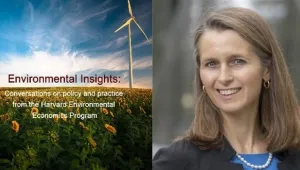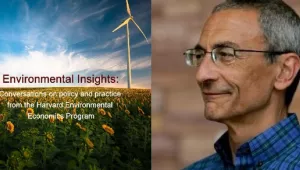Environmental policies consits of two components: the identification of an overall goal and some means to achieve that goal. This essay considers the second component, the means— the "instruments"--of environmental policy, and it focuses, in particular, on the use of economic-incentive or market-based policy instruments.
The paper begins by considering a cost-minimizing pollution control program for a uniformly-mixed, flow pollutant, for which— as is well known— a cost-effective allocation of the pollution-control burden among sources requires that all sources experience the same marginal abatement cost. To achieve this cost-effective allocation of the pollution-control burden, the government could conceivably establish a non-uniform (source-specific) standard to ensure that all firms would control emissions at the same marginal cost of control, but this would require detailed information about the costs faced by each source, information that could be obtained by the authority only at a very great cost, if at all. One way out of this impasse is through the use of economic-incentive or market-based policy instruments.
Economic-incentive instruments are regulations that encourage behavior through price signals rather than through explicit instructions on pollution control levels or methods. These policy instruments, such as tradable permits and pollution charges, have been described as "harnessing market forces," because if they are properly implemented, they encourae firms to undertake pollution control efforts that are in their financial self-interest and that will collectively meet policy goals.
Economic-incentive instruments have captured the attention of environmental policy makers in recent years because of the potential advantages they offer over traditional command-and-control approaches. In theory, properly designed and implemented economic-incentive instruments allow any desired level of pollution cleanup to be realized at the lowest possible overall cost to society, because they provide incentives for the greatest reductions in pollution by those firms that can achieve these reductions most cheaply. Rather than equalizing pollution levels among firms, economic-incentive instruments equalize the incremental amount that firms spend to reduce their pollution (their marginal abatement costs).
Economic-incentive instruments can be divided into five categories. Pollution charge systems assess a fee or tax on the amoung of pollution a firm generates. Tradable permits can achieve the same cost-minimizing allocation of the pollution control burden as a charge system, while avoiding the problem of uncertain responses by firms. A special case of a pollution tax is a deposit refund system, under which consumers pay a surcharge when purchasing potentially polluting products, and receive a rebate when returning the the product to an approved center for recycling or proper disposal. Reducing market barriers can also help to curb pollution, since, in some cases, substantial gains can be made in environmental protection simply by removing existing government-mandated barriers to market activity. Finally, elimination of government subsidies can be a powerful economic incentive for environmental protection, because some subsidies promote inefficient and environmentally unsound economic development.
There have been six major applications of economic-incentive instruments in the United States: the U.S. Environmental Protection Agency''s (EPA) Emission Trading Program, the leaded gasoline phasedown, water quality permit trading, chloroflourocarbon (CFC) trading, the SO2 allowance for acid rain control, and the RECLAIM program in the Los Angeles metropolitan region.
Economic-incentive instruments have delivered attractive results where implemented and promise additional future benefits. To date, their effectiveness has been undermined by unrealistic expectations, lack of political skill, flaws in design, and constraints imposed by the internal structure of firms. These are all remediable. Policy makers should direct their efforts to making future applications work better than those that came before.
Stavins, Robert N. “Economic Incentives for Environmental Regulation.” Harvard Kennedy School,





